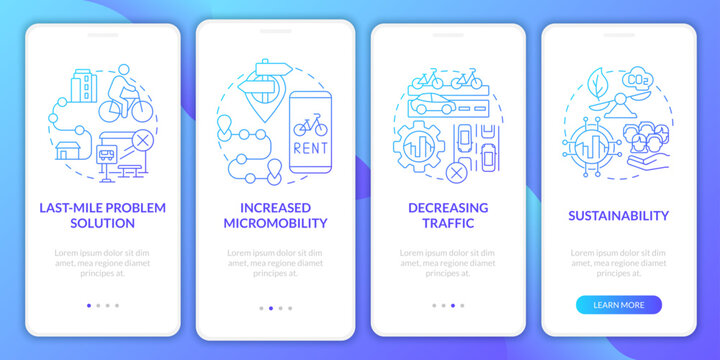As cities become smarter and more connected, new technologies are being developed to improve transportation safety. One of the most promising of these is artificial intelligence (AI), which can help reduce accidents, improve driver behavior, and enhance passenger safety. In this article, we will explore how AI provides safer rides in smart cities. We will discuss the different AI technologies being used in transportation, the benefits of AI in smart city transportation, and specific examples of successful AI implementations in real-world transportation scenarios. We will also examine the potential risks and ethical considerations associated with using AI in transportation and discuss the role of government regulations and policies in promoting the safe and responsible use of AI technology. Finally, we will look at the future of AI in transportation and how it can continue to enhance safety and improve transportation systems in smart cities.

Artificial Intelligence in Transportation
Transportation safety is a critical concern for smart cities, and one of the most promising solutions is the use of artificial intelligence (AI) technology. AI algorithms are used to optimize traffic flow and reduce congestion, enhancing traffic management systems. Self-driving cars are another significant development, which are capable of processing data from sensors and cameras to make real-time decisions about how to drive safely, using AI algorithms.
One of the significant benefits of AI technology is its ability to process vast amounts of data quickly and accurately. This allows transportation systems to detect potential safety hazards and respond to them in real-time, which can help prevent accidents and save lives. AI can also be used to predict traffic patterns and identify potential traffic bottlenecks, allowing for proactive measures to be taken to reduce congestion. The implementation of AI technology in transportation can revolutionize the way we travel, making it safer, more efficient, and more convenient.

Benefits of AI in Smart City Transportation
The benefits of using AI technology in transportation go beyond just improving safety. AI has the ability to reduce traffic congestion, improve fuel efficiency, and enhance the overall passenger experience. By leveraging machine learning algorithms, AI can analyze large amounts of data in real-time, allowing for more efficient and effective traffic management.
One of the most significant benefits of AI in transportation is its ability to prevent accidents. AI can detect potential hazards on the road, such as other vehicles, pedestrians, or obstacles, and alert drivers or automated systems to take corrective action. This can significantly reduce the number of accidents on the road and improve overall safety.
In addition to preventing accidents, AI can also improve driver behavior by analyzing data on driving patterns and providing feedback to drivers on how to improve their driving habits. For example, AI can detect if a driver is frequently braking too hard or accelerating too quickly, and provide feedback on how to drive more smoothly and safely.
Another benefit of AI in transportation is its ability to enhance the passenger experience. By providing real-time information on traffic conditions, weather, and other potential hazards, AI can help passengers make informed decisions about their travel plans and avoid potentially dangerous situations. Additionally, AI can be used to optimize routes for public transportation, reducing travel time and improving the overall experience for passengers.
Furthermore, AI can also assist in reducing traffic congestion and improving fuel efficiency by optimizing traffic flow and reducing idling time. This can lead to significant reductions in greenhouse gas emissions and other environmental pollutants.
Overall, the benefits of AI in smart city transportation are numerous, and its potential impact on improving safety and efficiency is significant. As AI technology continues to evolve, we can expect to see even more innovative solutions for transportation challenges in the future.

AI-Powered Ride-Sharing Services
Ride-sharing services are becoming increasingly popular in many smart cities around the world. To improve the safety of passengers and drivers, ride-sharing companies are now using AI-powered safety features. These features include:
Driver and passenger screening: Ride-sharing companies are using AI algorithms to screen drivers and passengers for potential safety risks. This can help prevent incidents such as assaults or thefts.
Real-time feedback for drivers: AI algorithms can detect when a driver is driving too aggressively or is distracted and provide real-time feedback to help the driver improve their driving habits. This can help prevent accidents and improve overall driver safety.
Real-time information for passengers: AI is being used to enhance passenger safety by providing real-time information on the location of the ride and the estimated time of arrival. This can help passengers feel more secure and can also help prevent incidents such as kidnappings or robberies.
These AI-powered features have helped improve the safety of ride-sharing services for both passengers and drivers. In addition, they have also helped increase the overall trust in ride-sharing services, making them a more attractive option for urban mobility in smart cities.

Improving Public Transportation Safety with AI
Public transportation is an essential part of urban mobility, and AI technology is playing a crucial role in improving its safety in smart cities. AI-powered cameras and sensors are being used to monitor bus and train stations, alerting authorities to potential safety hazards in real-time. This technology can also identify unusual behavior patterns and alert authorities before an incident occurs.
Additionally, AI algorithms are being used to optimize public transportation routes, reducing congestion, and improving on-time performance. Machine learning algorithms can analyze data from multiple sources, including traffic patterns, weather, and passenger usage, to predict demand and optimize routes accordingly. This helps reduce the risk of accidents caused by overcrowding and congestion.
Furthermore, AI technology is being used to improve accessibility on public transportation, providing real-time information on route changes, delays, and other important updates to passengers. This not only improves safety but also enhances the overall passenger experience. For instance, some cities are using AI chatbots to provide real-time information to passengers with disabilities, ensuring that they can access the information they need to travel safely and independently.
Overall, AI technology is helping to transform public transportation into a safer, more efficient, and accessible mode of transportation for all.

Ethical Considerations in AI-Powered Transportation
AI technology has the potential to revolutionize transportation safety, but it also raises ethical considerations. One of the main concerns is data privacy and security. Collecting and storing sensitive information on passengers and drivers can lead to data breaches, identity theft, and other malicious activities. To address this concern, it is essential to implement strict data protection policies and use secure data storage and encryption methods.
Another ethical consideration is the potential for AI algorithms to perpetuate existing biases or discrimination. For example, facial recognition technology has been shown to have higher error rates when identifying people of color and women. To mitigate this risk, it is important to use diverse data sets when training algorithms and to regularly test and audit the algorithms to ensure they are not perpetuating bias.
To address these ethical considerations, it is essential to develop and use AI technology in a responsible and transparent manner. This includes implementing rigorous testing and validation processes, using diverse data sets to mitigate bias, and providing clear disclosure and consent mechanisms to users. Additionally, it is important to involve stakeholders, such as passengers, drivers, and community organizations, in the development and deployment of AI technology in transportation.
As AI technology continues to evolve, it is important to stay vigilant about potential ethical considerations and to prioritize responsible and transparent implementation.

Future Developments in AI for Transportation Safety
As AI technology continues to advance rapidly, the potential for its use in transportation safety is vast. For instance, AI-powered drones could be used to monitor traffic and detect potential safety hazards in real-time with their ability to analyze large amounts of data. Similarly, AI algorithms could be used to optimize traffic flow and reduce congestion on highways and major roads. This would lead to a reduction in accidents, vehicle emissions and energy consumption, and overall improvement in the transportation system.
Furthermore, the development of 5G networks and other advanced communication technologies could support the deployment of autonomous vehicles and other AI-powered transportation solutions. These technologies, coupled with AI, could lead to further improvements in transportation safety, efficiency, and overall passenger experience. For example, autonomous vehicles could communicate with each other and with the transportation infrastructure to avoid collisions and optimize routes.
Additionally, machine learning algorithms could be used to analyze driver behavior and identify potential safety risks, such as distracted driving, drowsiness, or aggressive driving. This could help prevent accidents before they occur and enhance driver safety.
As AI technology continues to grow, it is clear that its potential for transforming transportation safety is immense. With responsible implementation and monitoring, AI has the potential to revolutionize smart city transportation and provide safer rides for all.
Insider Tips for Staying Safe on AI-Powered Rides
When using AI-powered ride-sharing services or public transportation, it’s essential to take certain precautions to ensure your safety. Here are some insider tips to keep in mind:
Check Driver’s Rating and Reviews
Before getting into a ride-sharing vehicle, always check the driver’s rating and reviews. This information can provide valuable insights into the driver’s behavior and reliability.
Share Your Ride Details
It’s always a good idea to share your ride details with a trusted friend or family member, including your route and estimated time of arrival. This way, someone can monitor your trip and take action if needed.
Be Aware of Your Surroundings
When using AI-powered transportation, be aware of your surroundings. If you notice any suspicious behavior, report it to the authorities or the ride-sharing company. Stay alert, and trust your instincts.
Keep Your Personal Information Secure
Always keep your personal information secure. Only share it with trusted sources or apps. Be wary of any requests for personal information that seem unnecessary.
Follow Safety Guidelines
When using public transportation, follow all posted safety guidelines and rules. These guidelines are there for your safety and the safety of others.
By following these tips, you can help ensure a safe and secure transportation experience in an AI-powered world.
In conclusion, AI technology is playing an increasingly important role in transportation safety in smart cities. From autonomous vehicles to ride-sharing services and public transportation, AI is being used to detect potential safety hazards, improve driver behavior, and enhance passenger safety. While there are ethical considerations and potential risks to be aware of, responsible implementation and monitoring of AI technology can help ensure that it is used in a safe and effective manner. As we look to the future, the potential for AI technology to continue to improve transportation safety is exciting, and we can expect to see continued development in this area in the coming years.
One study that is compelling was conducted by the National Highway Traffic Safety Administration, which found that autonomous vehicles have the potential to reduce traffic fatalities by up to 94%. This study, along with others like it, highlights the significant potential of AI technology to improve transportation safety in smart cities and beyond.